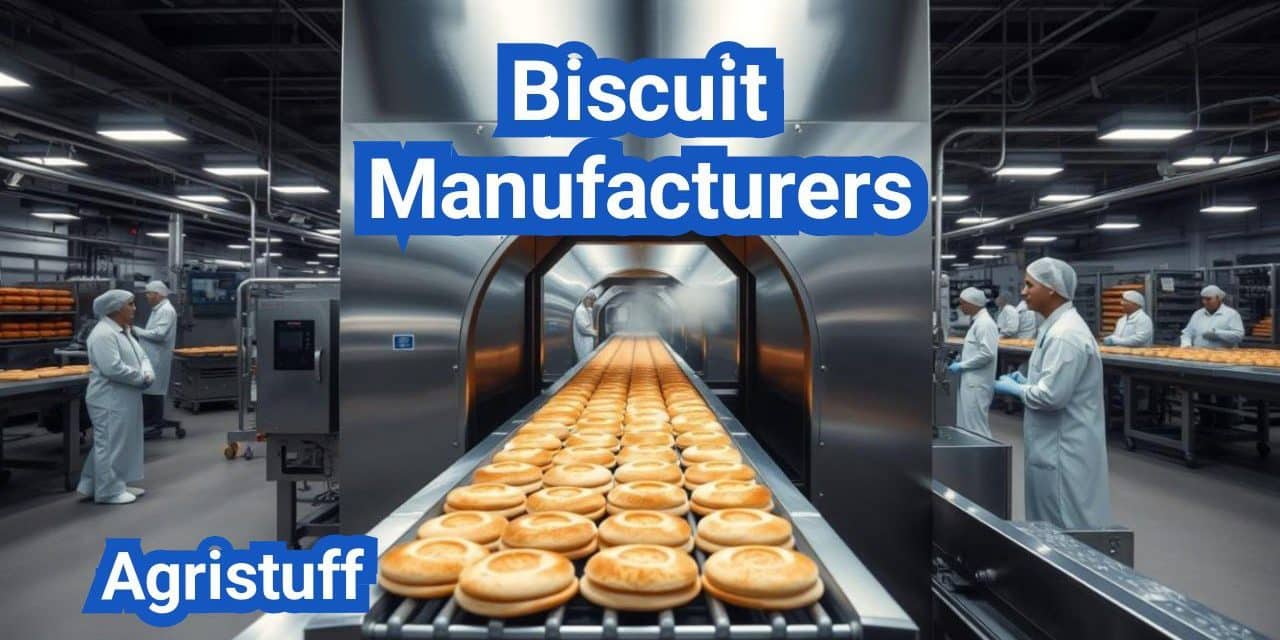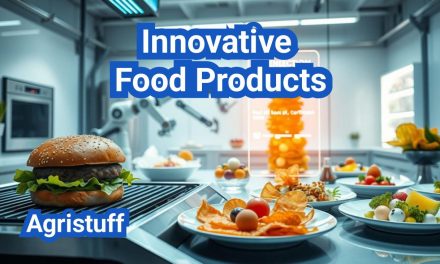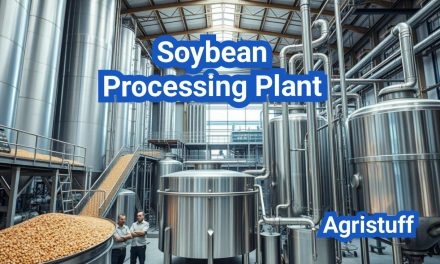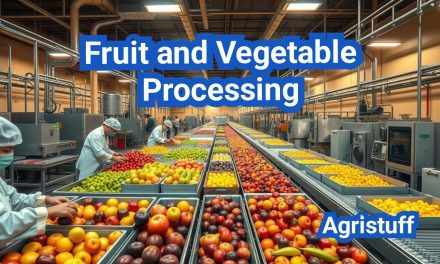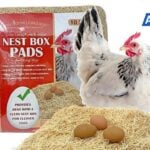The United States is home to a thriving biscuit manufacturing industry, with numerous companies utilizing advanced equipment for large-scale production.
The process involves continuous dough mixing to create uniform dough, followed by laminating to achieve the desired texture, and baking to perfection using industrial biscuit ovens.
Leading providers of bakery equipment, such as EM Bakery Equipment, Swift Machinery, and AMF Bakery Systems, play a crucial role in enabling biscuit manufacturers to produce high-quality products efficiently.
Key Takeaways
- The U.S. biscuit manufacturing industry relies on advanced equipment for large-scale production.
- Continuous dough mixing ensures uniform dough quality.
- Laminating is crucial for achieving the desired biscuit texture.
- Industrial biscuit ovens enable efficient baking.
- Leading bakery equipment providers support biscuit manufacturers.
The Evolution of Biscuit Manufacturing in America
From artisanal roots to industrial-scale production, American biscuit manufacturing has evolved considerably. The history of biscuit production dates back to ancient civilizations, but it was the Industrial Revolution that marked a significant turning point in commercial biscuit manufacturing.
Historical Development of Commercial Biscuit Production
The development of commercial biscuit production in America was influenced by European baking traditions. Early biscuit manufacturers relied on manual processes and simple ingredients. The introduction of mechanized baking equipment during the Industrial Revolution revolutionized the industry, enabling mass production and consistency in quality.
Mechanization and Innovation: The late 19th and early 20th centuries saw significant advancements in biscuit manufacturing technology. Companies like Reading Bakery Systems played a crucial role in this evolution by providing innovative equipment and solutions for commercial biscuit production.
Transition from Artisanal to Industrial Manufacturing
The transition from artisanal to industrial manufacturing was a gradual process. As demand for biscuits grew, manufacturers had to adapt by scaling up production while maintaining product quality. This involved the adoption of new technologies and manufacturing processes.
Key Factors in the Transition:
- Introduction of automated mixing and dough handling systems
- Adoption of continuous baking ovens
- Development of sophisticated packaging solutions
These advancements not only increased production capacity but also improved product consistency and shelf life, paving the way for the modern biscuit manufacturing industry in America.
Leading Biscuit Manufacturers in the United States

The United States is home to a diverse range of biscuit manufacturers, catering to various consumer preferences and market segments. The biscuit industry is characterized by the presence of both large commercial players and smaller regional producers.
Major Commercial Players | Biscuit Manufacturers
Major companies such as Mondelēz, Kellogg’s, and Pepperidge Farm dominate the biscuit market in the USA. These industry leaders offer a wide range of biscuit products, from classic saltines to specialty crackers. Their extensive distribution networks and brand recognition enable them to maintain a significant market share.
Mondelēz, for instance, is known for its popular brands like Ritz and Saltines, while Kellogg’s offers products under the Kellogg’s and Keebler labels. Pepperidge Farm is renowned for its high-quality baked goods, including a variety of biscuits and crackers.
Regional and Specialty Biscuit Producers
In addition to the major commercial players, regional and specialty biscuit producers play a crucial role in the industry. These manufacturers often focus on specific geographic areas or niche markets, offering unique products that cater to local tastes and preferences.
Regional producers may specialize in traditional or artisanal biscuit recipes, providing consumers with a diverse range of options beyond mass-produced products. Their ability to adapt to local preferences and trends helps maintain the richness of the biscuit market.
Private Label Manufacturing Landscape | Biscuit Manufacturers
Private label manufacturing is another significant aspect of the biscuit industry in the United States. Many retailers partner with contract manufacturers to produce biscuits under their store-brand labels. This approach allows retailers to offer competitive pricing and unique products to their customers.
Private label biscuit manufacturing involves companies producing high-quality biscuits according to the retailer’s specifications. This segment of the industry has seen growth as consumers increasingly look for affordable, quality alternatives to branded products.
Essential Ingredients and Formulation for Commercial Biscuit Production
The foundation of commercial biscuit production lies in the careful selection and formulation of ingredients. The quality and characteristics of these ingredients significantly impact the final product’s texture, taste, and appearance.
Core Ingredients and Their Functional Properties | Biscuit Manufacturers
Commercial biscuit production typically begins with core ingredients such as flour, sugar, and fats. Flour provides structure, with its protein content influencing the dough’s strength and elasticity. Wheat flour is the most commonly used due to its gluten-forming properties, which are essential for dough development.
Sugar not only adds sweetness but also contributes to browning, texture, and moisture retention. The type of sugar used can affect the biscuit’s flavor profile and texture. Fats, such as butter or vegetable oils, play a crucial role in tenderizing the biscuit, enhancing flavor, and aiding in the lamination process.
| Ingredient | Functional Property |
|---|---|
| Flour | Provides structure and texture |
| Sugar | Adds sweetness, aids in browning |
| Fats | Tenderizes, enhances flavor, aids in lamination |
Specialty Ingredients for Different Biscuit Types
Depending on the type of biscuit being produced, specialty ingredients may be incorporated to achieve specific characteristics. For instance, crackers may include yeast or baking soda for leavening, while cookies might contain chocolate chips or nuts for added flavor and texture.
“The right formulation is key to producing high-quality biscuits that meet consumer expectations.”
Scaling Recipes for Industrial Production | Biscuit Manufacturers
Scaling up recipes for industrial production requires careful consideration to maintain the product’s consistency and quality. This involves precise calculations and adjustments to ingredient ratios, mixing times, and baking parameters.
Industrial biscuit manufacturers must also consider factors such as ingredient sourcing, storage, and handling to ensure that the final product meets the desired specifications.
Continuous Dough Mixing Systems and Technologies

In the realm of biscuit production, continuous dough mixing stands out as a critical process that ensures uniformity and reduces contamination risks. This method has become indispensable in modern biscuit manufacturing, offering a range of benefits over traditional batch mixing.
Types of Industrial Mixers Used in Biscuit Manufacturing
Industrial mixers are the backbone of continuous dough mixing systems. Various types of mixers are employed depending on the specific requirements of the biscuit production line. High-shear mixers are often used for doughs that require intense mixing, while low-shear mixers are preferred for more delicate dough formulations.
The choice of mixer significantly impacts the final product’s quality. For instance, Mondelēz International, a leading biscuit manufacturer, utilizes high-shear mixers in their production lines to achieve consistent dough hydration and texture.
Process Parameters and Control Systems | Biscuit Manufacturers
Effective continuous dough mixing relies heavily on precise control of process parameters. These include dough temperature, mixing time, and ingredient feed rates. Advanced control systems, often featuring real-time monitoring and automated adjustments, are crucial for maintaining consistency across large production volumes.
“The precision offered by modern control systems allows biscuit manufacturers to achieve a high level of product uniformity, which is essential for meeting consumer expectations,” notes an industry expert.
- Temperature control: Maintaining optimal dough temperature.
- Mixing time adjustment: Ensuring the right level of dough development.
- Ingredient feed rate management: Precise control over ingredient addition.
Troubleshooting Common Mixing Challenges | Biscuit Manufacturers
Despite the advancements in continuous dough mixing, challenges can still arise. Common issues include dough inconsistency, ingredient segregation, and equipment wear. Effective troubleshooting involves identifying the root cause of the problem and implementing corrective actions.
For example, if dough inconsistency is observed, checking the ingredient feed rates and mixer settings can help resolve the issue. Regular maintenance of mixing equipment is also crucial for preventing wear-related problems.
By understanding and addressing these challenges, biscuit manufacturers can optimize their continuous dough mixing systems, ensuring high-quality products and efficient production processes.
The Laminated Cracker Process: Equipment and Techniques
Achieving the characteristic flaky texture of crackers relies heavily on the laminated cracker process, which involves layering dough with precision. This process is crucial in creating the desired texture and is made possible through advanced equipment and techniques.
Principles of Dough Lamination and Layering | Biscuit Manufacturers
Dough lamination is a multi-step process that involves layering dough and fat to create the flaky texture characteristic of crackers. The process begins with the preparation of the dough, which is then rolled out into thin sheets. These sheets are layered with fat, typically butter or margarine, to create the desired number of layers.
The layering process is critical, as it determines the final texture of the crackers. Industrial laminators are used to achieve precise layering, ensuring consistency across large production batches.
Industrial Laminators and Gauge Rollers | Biscuit Manufacturers
Industrial laminators are specialized machines designed to layer dough and fat with precision. These machines can be configured to produce a specific number of layers, depending on the desired texture of the final product.
Gauge rollers are another critical component in the laminated cracker process. These rollers control the thickness of the dough sheets, ensuring that they are uniform and consistent. This uniformity is essential for achieving the desired texture and for ensuring that the crackers bake evenly.
Quality Control Points in the Lamination Process | Biscuit Manufacturers
Quality control is essential throughout the lamination process to ensure that the final product meets the desired specifications. Key quality control points include monitoring the thickness of the dough sheets, the number of layers, and the temperature of the dough and fat.
By controlling these factors, manufacturers can ensure that their laminated crackers have the desired texture and flavor. Regular maintenance of the industrial laminators and gauge rollers is also crucial to prevent equipment failure and ensure consistent production.
Rotary Molding and Wire-Cut Technologies for Cookie Production

The production of cookies on a commercial scale relies heavily on advanced technologies such as rotary molding and wire-cut systems. These technologies enable manufacturers to produce cookies with precise shapes and textures efficiently.
Rotary Molding Equipment Specifications | Biscuit Manufacturers
Rotary molding equipment is designed for high-volume cookie production. These machines feature rotating molds that shape the dough into various forms. The specifications of rotary molding equipment can vary, but they typically include:
- Adjustable mold designs for different cookie shapes
- High-speed production capabilities
- Precision control systems for consistent output
The use of rotary molding technology allows for the production of cookies with uniform texture and appearance, which is crucial for commercial viability.
Wire-Cut Systems for Different Dough Types
Wire-cut systems are another critical technology in cookie production, particularly for dough types that are not suitable for rotary molding. These systems use a wire to cut the dough into desired shapes. Wire-cut technologies are versatile and can accommodate various dough consistencies, from soft to firm.
The key advantages of wire-cut systems include:
- Flexibility in producing different cookie shapes and sizes
- Ability to handle a wide range of dough types
- Minimal dough waste during the cutting process
Pattern and Shape Development for Commercial Products
Developing unique patterns and shapes is essential for creating commercially successful cookie products. Manufacturers use various techniques, including mold design and wire-cut configurations, to achieve distinctive cookie appearances. The ability to customize cookie shapes and patterns can be a significant competitive advantage in the market.
To achieve this, manufacturers often invest in research and development to create new and innovative cookie designs that appeal to consumers. This process involves testing different dough formulations and production techniques to ensure that the final product meets quality and taste expectations.
Industrial Biscuit Ovens: Configuration and Operation
The configuration and operation of industrial biscuit ovens play a crucial role in determining the quality and consistency of biscuit products. Industrial ovens are designed to meet the demands of high-volume production, and their configuration can significantly impact the final product.
Direct-Fired vs. Indirect-Fired Oven Systems | Biscuit Manufacturers
Industrial biscuit ovens can be categorized into two main types: direct-fired and indirect-fired systems. Direct-fired ovens use flames that come into direct contact with the baking product, providing rapid heating. In contrast, indirect-fired ovens use a heat exchanger to separate the combustion gases from the baking chamber, offering more controlled heating.
The choice between direct-fired and indirect-fired ovens depends on the specific requirements of the biscuit product being manufactured. Direct-fired ovens are often used for products that require a crispy crust, while indirect-fired ovens are preferred for products that need more uniform heating.
Temperature Profiling and Baking Parameters
Temperature profiling is a critical aspect of industrial biscuit oven operation. By adjusting the temperature at different stages of the baking process, manufacturers can achieve the desired product texture and color. Modern industrial ovens often feature advanced temperature control systems that allow for precise profiling.
| Baking Stage | Temperature Range (°F) | Effect on Product |
|---|---|---|
| Initial Baking | 350-400 | Sets crust formation |
| Color Development | 400-425 | Enhances product color |
| Final Baking | 375-400 | Completes baking process |
Maintenance and Optimization of Baking Systems
Regular maintenance is essential to ensure the optimal performance of industrial biscuit ovens. This includes cleaning, inspecting heating elements, and calibrating temperature control systems. By maintaining their ovens, manufacturers can prevent downtime and ensure consistent product quality.
Optimization of baking systems involves monitoring production data and making adjustments as needed to improve efficiency and product quality. This may include tweaking temperature profiles, adjusting baking times, or modifying oven configurations to better suit specific products.
Water Activity Management in Commercial Biscuit Production

The management of water activity plays a pivotal role in determining the shelf life and overall quality of biscuits produced on a commercial scale. Water activity, a measure of the energy status of water in a product, directly affects its stability and freshness.
Importance for Product Shelf Life | Biscuit Manufacturers
Water activity is crucial in controlling the growth of microorganisms, enzymatic reactions, and chemical degradation processes that can lead to spoilage. By maintaining optimal water activity levels, manufacturers can significantly extend the shelf life of their products.
Effects of Water Activity on Shelf Life:
- Microbial growth control
- Enzymatic reaction regulation
- Chemical degradation minimization
Measurement Technologies
Accurate measurement of water activity is essential for effective management. Various technologies are employed in the industry, including:
| Measurement Technology | Description | Advantages |
|---|---|---|
| Chilled Mirror Hygrometry | Measures dew point to determine water activity | High accuracy, fast measurement |
| Capacitance Sensors | Detects changes in capacitance due to water activity | Easy to use, suitable for continuous monitoring |
| Psychrometry | Uses wet and dry bulb temperature measurements | Reliable, cost-effective |
Control Methods and Post-Baking Processes
Controlling water activity involves a combination of formulation adjustments, processing techniques, and packaging strategies. Post-baking moisture equilibration is a critical process that allows the moisture content within the biscuit to stabilize, ensuring product uniformity and stability.
Key strategies for controlling water activity include:
- Formulation adjustments to achieve optimal moisture content
- Process control during baking and cooling
- Packaging in materials that provide appropriate moisture barrier properties
- Storage conditions that minimize moisture uptake or loss
By implementing these strategies and utilizing advanced measurement technologies, commercial biscuit manufacturers can effectively manage water activity, ensuring products with extended shelf life and consistent quality.
Flow Wrap Packaging Solutions for High-Volume Biscuit Lines
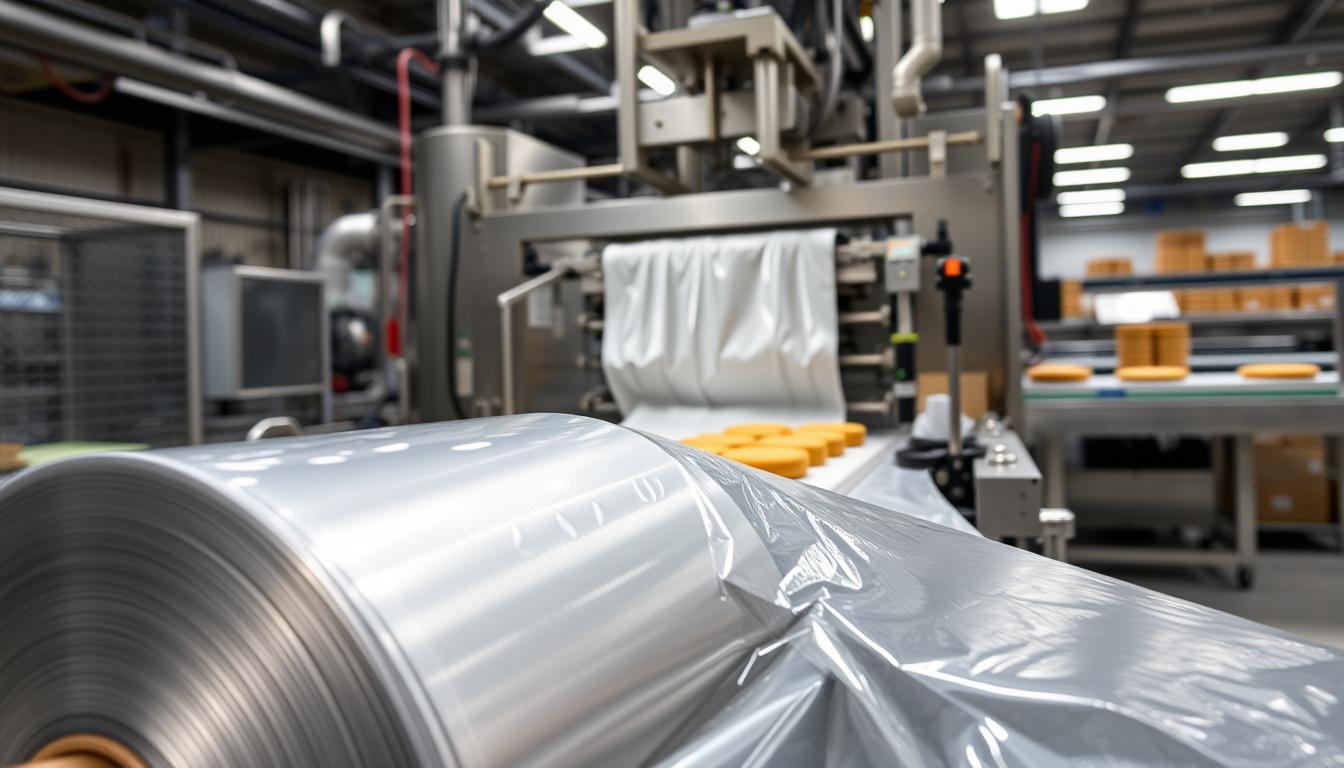
In the realm of high-volume biscuit production, flow wrap packaging stands out as a critical component, ensuring product freshness and packaging efficiency. This packaging method has become indispensable for manufacturers looking to optimize their production lines.
Modern High-Speed Packaging Technologies
Modern high-speed packaging technologies have revolutionized the biscuit industry, enabling manufacturers to package products at speeds that were previously unimaginable. These technologies incorporate advanced machinery that can handle a variety of packaging materials and formats, from simple wrappers to complex multi-layer packaging structures.
High-speed packaging machines are designed to be versatile, accommodating different sizes and types of biscuits. This versatility is crucial for manufacturers who need to adapt quickly to changing consumer demands and product variations.
Material Selection for Product Protection and Shelf Life
The choice of packaging material is critical in maintaining the quality and freshness of biscuits. Barrier films, for instance, are widely used for their ability to protect against moisture, oxygen, and other environmental factors that can affect product shelf life.
Manufacturers must consider several factors when selecting packaging materials, including the type of biscuit, storage conditions, and distribution channels. The goal is to ensure that the packaging not only protects the product but also aligns with consumer preferences for sustainability and convenience.
Efficiency Optimization in Packaging Operations
Optimizing efficiency in packaging operations is a multifaceted challenge that involves streamlining processes, reducing waste, and improving machine performance. Lean manufacturing principles can be applied to packaging lines to eliminate bottlenecks and enhance overall productivity.
Regular maintenance of packaging equipment is essential to prevent downtime and ensure consistent performance. Additionally, investing in operator training can significantly impact efficiency, as knowledgeable staff can better manage packaging processes and troubleshoot issues.
By focusing on modern high-speed packaging technologies, careful material selection, and efficiency optimization, biscuit manufacturers can significantly enhance their packaging operations, ultimately improving product quality and customer satisfaction.
FSMA Preventive Controls Implementation for Biscuit Manufacturers

FSMA regulations mandate biscuit manufacturers to develop and implement preventive controls to minimize contamination risks. This requirement is a cornerstone of the Food Safety Modernization Act, emphasizing proactive measures to ensure food safety.
Regulatory Requirements and Compliance Strategies
Biscuit manufacturers must comply with FSMA regulations by identifying potential hazards in their production processes and implementing preventive controls. This involves a thorough risk assessment to determine where contamination could occur and devising strategies to mitigate these risks.
Key Compliance Strategies:
- Conducting thorough risk assessments
- Implementing preventive controls such as sanitation and hygiene practices
- Training personnel on food safety protocols
Effective compliance also requires staying updated with the latest regulatory requirements and adapting processes accordingly.
Developing Effective Food Safety Plans
A food safety plan is crucial for biscuit manufacturers to systematically manage food safety risks. This plan should outline the procedures for identifying hazards, implementing preventive controls, and verifying their effectiveness.
“A well-designed food safety plan is not just a regulatory requirement; it’s a critical component of a company’s overall quality and safety culture.” –
Food Safety Expert
Developing an effective food safety plan involves:
- Identifying potential hazards in the production process
- Establishing preventive controls to mitigate these hazards
- Regularly reviewing and updating the plan to ensure its effectiveness
Documentation and Verification Procedures
Documentation is a critical aspect of FSMA compliance, as it provides evidence of adherence to food safety protocols. Biscuit manufacturers must maintain detailed records of their food safety plans, including hazard analyses, preventive controls, and verification activities.
| Documentation Type | Description | Frequency |
|---|---|---|
| Hazard Analysis | Detailed analysis of potential hazards in the production process | Annually or as needed |
| Preventive Control Measures | Records of preventive controls implemented | Ongoing |
| Verification Records | Documentation of verification activities, such as audits and testing | Regularly scheduled |
Verification procedures are equally important, as they ensure that the preventive controls are effective and that the food safety plan is working as intended.
Allergen Control Protocols in Multi-Product Facilities

Multi-product facilities producing biscuits must implement stringent allergen control measures to prevent cross-contamination. The presence of common allergens like nuts, gluten, and dairy in biscuit production poses significant risks if not managed properly.
Common Allergens in Biscuit Production Environments
Biscuit production environments often involve ingredients that are common allergens. The most prevalent allergens in this context include nuts, gluten, and dairy products. Effective allergen control begins with identifying these potential allergens in the production process.
- Nuts (tree nuts and peanuts)
- Gluten (wheat, barley, rye)
- Dairy products
- Soy
- Eggs
Understanding the sources of these allergens is crucial for developing effective control protocols.
Segregation Strategies and Cleaning Validation
Segregation strategies are critical for minimizing the risk of cross-contamination. This involves separating production lines and equipment for products containing different allergens. Cleaning validation is also essential to ensure that equipment is thoroughly cleaned between production runs.
| Segregation Strategy | Description | Benefits |
|---|---|---|
| Separate Production Lines | Dedicated lines for products with different allergens | Reduces risk of cross-contamination |
| Equipment Segregation | Using separate equipment for allergenic ingredients | Prevents allergen transfer |
| Temporal Segregation | Scheduling production of allergenic products separately | Minimizes exposure to allergens |
Testing Methodologies and Threshold Management
Testing methodologies are vital for verifying the effectiveness of allergen control protocols. This includes using various analytical techniques to detect the presence of allergens in products and production environments. Threshold management involves setting acceptable limits for allergen presence to ensure compliance with regulatory requirements.
By implementing these strategies, biscuit manufacturers can significantly reduce the risk of allergen cross-contamination, ensuring a safer product for consumers with allergies.
Energy Efficiency Optimization in Biscuit Manufacturing
The pursuit of energy efficiency in biscuit production is driven by both economic and environmental factors. As energy costs continue to rise, manufacturers are seeking ways to reduce consumption without compromising product quality. Energy efficiency optimization involves various strategies, including heat recovery systems, advanced equipment selection, and the integration of renewable energy sources.
Heat Recovery Systems and Thermal Management
Heat recovery systems play a crucial role in optimizing energy efficiency in biscuit manufacturing. These systems capture and reuse heat generated during the baking process, reducing the need for additional energy inputs. Effective thermal management involves designing and implementing systems that can efficiently recover and utilize this heat.
- Implementing heat exchangers to capture waste heat
- Using recovered heat for preheating or other processes
- Optimizing insulation to minimize heat loss
By adopting these strategies, biscuit manufacturers can significantly reduce their energy consumption and lower operational costs.
Equipment Selection for Reduced Energy Consumption
The selection of energy-efficient equipment is another critical aspect of optimizing energy efficiency in biscuit manufacturing. Modern industrial ovens, mixers, and other processing equipment are designed to consume less energy while maintaining or improving productivity.
Key considerations for equipment selection include:
- Energy efficiency ratings
- Compatibility with existing production lines
- Maintenance and operational costs
By choosing the right equipment, manufacturers can achieve significant energy savings and reduce their environmental footprint.
Renewable Energy Integration in Production Facilities
Integrating renewable energy sources into biscuit manufacturing facilities offers a promising avenue for reducing dependence on non-renewable energy. Solar, wind, and biomass energy can be harnessed to power production processes, lowering energy costs and mitigating environmental impact.
Benefits of renewable energy integration include:
- Reduced greenhouse gas emissions
- Lower energy costs over time
- Enhanced sustainability credentials
As technology continues to evolve, the feasibility and benefits of renewable energy integration in biscuit manufacturing are likely to increase, offering a cleaner, more sustainable production pathway.
Acrylamide Mitigation Strategies for Biscuit Products

Understanding acrylamide formation is key to developing effective mitigation strategies in biscuit manufacturing. Acrylamide is a potential contaminant that forms during the baking process, influenced by factors such as ingredient composition and processing conditions.
Formation Mechanisms and Regulatory Considerations
Acrylamide forms through the Maillard reaction, a chemical reaction between amino acids and reducing sugars when exposed to high temperatures. Regulatory bodies, such as the FDA, have issued guidelines to minimize acrylamide levels in food products. Manufacturers must be aware of these regulations and implement strategies to comply.
The Maillard reaction is not only responsible for acrylamide formation but also contributes to the flavor and color of baked goods. Balancing these factors is crucial for maintaining product quality while reducing acrylamide levels.
Process Modifications to Reduce Acrylamide Levels
Several process modifications can help reduce acrylamide levels in biscuit products. These include adjusting baking temperatures and times, modifying ingredient formulations, and controlling moisture levels.
- Reducing baking temperatures and extending baking times can lower acrylamide formation.
- Using ingredients like ammonium bicarbonate instead of sodium bicarbonate can influence acrylamide levels.
- Controlling the moisture content of dough can impact acrylamide formation during baking.
| Process Modification | Effect on Acrylamide Levels |
|---|---|
| Lower Baking Temperature | Reduces acrylamide formation |
| Ingredient Reformulation | Can reduce or increase acrylamide depending on the ingredients used |
| Moisture Control | Optimal moisture levels can minimize acrylamide formation |
Testing Protocols and Monitoring Systems
Regular testing and monitoring are essential to ensure the effectiveness of acrylamide mitigation strategies. Manufacturers can use various analytical methods to measure acrylamide levels in their products.
Implementing a robust monitoring system allows manufacturers to quickly identify and address any issues related to acrylamide formation, ensuring compliance with regulatory limits and maintaining product safety.
Future Trends in U.S. Biscuit Manufacturing
The U.S. biscuit manufacturing industry is on the cusp of significant transformation, driven by evolving consumer preferences and technological advancements. As consumers increasingly demand healthier and more sustainable products, manufacturers are responding with innovative solutions that balance taste, nutrition, and environmental responsibility.
Future trends in U.S. biscuit manufacturing will be shaped by the adoption of cutting-edge technologies, including automation and energy-efficient equipment. Companies like Mondelēz and Kellogg’s are already investing in these areas, enhancing their production capabilities while reducing their environmental footprint.
Sustainability initiatives will play a crucial role in the industry’s future, with manufacturers focusing on reducing waste, conserving energy, and implementing eco-friendly packaging solutions. As the industry continues to evolve, innovation and sustainability will be key drivers of growth and competitiveness in U.S. biscuit manufacturing.
FAQ
What is the significance of the biscuit manufacturing industry in the U.S.?
The biscuit manufacturing industry in the U.S. is a significant sector that involves various processes, including mixing, laminating, and baking, with major commercial players like Mondelēz, Kellogg’s, and Pepperidge Farm leading the market.
How has biscuit manufacturing evolved over time?
Biscuit manufacturing has evolved significantly from artisanal production to industrial-scale manufacturing, with the Industrial Revolution marking a crucial turning point with the introduction of mechanized processes and steam-powered ovens.
What are the key processes involved in commercial biscuit production?
Commercial biscuit production involves mixing ingredients to create uniform dough, laminating to achieve the desired texture, and baking to perfection, with companies like EM Bakery Equipment, Swift Machinery, and AMF Bakery Systems providing advanced equipment.
What is the importance of water activity management in biscuit production?
Water activity management is critical in commercial biscuit production, as it directly impacts product shelf life, with measurement technologies and control methods used to maintain optimal levels.
How do biscuit manufacturers ensure compliance with FSMA regulations?
Biscuit manufacturers ensure compliance with FSMA regulations by implementing preventive controls, developing effective food safety plans, and maintaining documentation and verification procedures.
What are the common allergens in biscuit production environments?
Common allergens in biscuit production environments include nuts, gluten, and dairy, with segregation strategies and cleaning validation used to prevent cross-contamination.
How can biscuit manufacturers optimize energy efficiency?
Biscuit manufacturers can optimize energy efficiency through heat recovery systems, thermal management, and equipment selection, with renewable energy integration also reducing environmental impact.
What are the strategies for mitigating acrylamide in biscuit products?
Strategies for mitigating acrylamide in biscuit products include understanding formation mechanisms, process modifications, and testing protocols, with regulatory considerations also essential.
What is the role of continuous dough mixing in biscuit manufacturing?
Continuous dough mixing is a critical process in biscuit manufacturing, offering several advantages over batch mixing, with industrial mixers designed to handle large quantities of dough.
How do industrial biscuit ovens contribute to high-volume production?
Industrial biscuit ovens are designed for high-volume production, with configurations ranging from direct-fired to indirect-fired systems, and temperature profiling and baking parameters crucial for achieving the desired product texture and color.
What is the significance of flow wrap packaging in biscuit production?
Flow wrap packaging is a widely used solution for high-volume biscuit lines, offering efficient and protective packaging, with modern high-speed packaging technologies enabling rapid wrapping.
Conclusion of: Biscuit Manufacturers in USA
What biscuit manufacturers do in the U.S. market
In the United States, biscuit manufacturers typically operate within the “cookie and cracker” segment, scaling from ingredient receiving to packaging under rigorous quality and safety systems. Understanding this scope helps position biscuit production alongside crackers and cookies in NAICS 311821, which frames capacity planning, compliance, and market reporting for the sector. U.S. Census NAICS 311821
Ingredient sourcing and flour fundamentals
Most biscuit manufacturers rely on North American wheat milled into diverse flours (hard/soft wheat, enriched or specialty) to achieve target textures, spread, and bite. U.S. growers, elevators, and mills form a mature supply chain that provides consistent protein quality and ash levels to meet strict bakery specifications. USDA ERS – Wheat sector at a glance
From concept to carton: an overview of the process
At high volume, biscuit manufacturers run integrated lines: bulk handling → dosing → mixing → sheeting/laminating or rotary molding → baking → cooling → inspection → flow-wrapping → cartoning/palletizing. Line design balances throughput with changeover agility for SKUs like laminated crackers, wire-cut cookies, or rotary-molded biscuits. Reading Bakery Systems – Industrial bakery equipment
Mixing at scale: batch vs. continuous
Modern biscuit manufacturers increasingly adopt continuous mixing to stabilize dough temperature, reduce lay time, and automate moisture control across long runs. Continuous systems deliver uniform development for low-moisture cracker doughs and higher-fat cookie doughs, while still allowing recipe flexibility. RBS – Exact Continuous Mixer
Laminating for flaky structure
For cream crackers, saltines, and cocktail biscuits, biscuit manufacturers use cut-sheet laminators to stack dough layers, creating a flaky, blistered texture after fermentation and bake. Precise layer count, roll speeds, and sheet relaxation deliver consistent cell structure and bite. Bühler – Meincke LAM cut-sheet laminator
Sheeting, gauging, and cutting
After lamination, biscuit manufacturers reduce dough to a target thickness via gauging rolls, then dock and cut shapes (or emboss) before the oven. Tight control of sheet tension, scrap return, and flouring minimizes stress cracking and maintains dimensional accuracy. Thomas L. Green Sheeter/Laminator
Direct gas-fired (DGF), convection, and hybrid ovens
To hit bake curves and color targets, biscuit manufacturers deploy DGF, recirculating convection, or hybrid tunnel ovens. DGF zones “cook” and develop structure early, while convection zones efficiently strip moisture and balance color across the band—delivering uniformity at scale. RBS – PRISM tunnel ovens
Indirect convection & precise moisture control
Many biscuit manufacturers prefer indirect-fired convection ovens for uniform heat and humidity control—especially on products sensitive to combustion gases. Multi-zone systems with rapid response dampers let teams tune profiles for different SKUs without compromising throughput. Bühler – Meincke Turbu 4.0 tunnel oven
Hybrid ovens for efficiency and product range
Hybrid ovens combine DGF and convection zones, giving biscuit manufacturers greater flexibility to make fermented laminated crackers and other complex items with tighter control over expansion, color, and final moisture—often at lower energy per pound. Hybrid tunnel ovens – RBS whitepaper
Electrification and heat recovery
Sustainability programs push biscuit manufacturers toward electrified ovens and heat-recovery modules that reclaim surplus energy to preheat air or support utilities—cutting emissions intensity without sacrificing bake quality. Bühler – Baking process & heat recovery
Controlled cooling to prevent “checking”
Post-bake, biscuit manufacturers cool product to a stable core temperature and moisture before packaging. Managed airflows and residence time reduce thermal shock and minimize “checking” (surface cracks) while protecting texture and snap. RBS – Ambient Air Cooler (overview page)
Water activity and crispness
Low water activity (aw) underpins crispness and shelf life for biscuit manufacturers. Typical crunchy cookies/crackers sit in a low-aw range, so operations monitor and control drying, cooling, and film barrier selection to prevent moisture pick-up during distribution. METER Food – Water activity basics
Flow-wrapping and hermetic seals
Most biscuit manufacturers package in horizontal flow-wraps with fin seals and easy-open features. Consistent sealing (time/temperature/pressure) and qualified films are critical to keeping aw stable and preventing staling. Syntegon – Horizontal flow wrappers
Regulatory backbone: FSMA preventive controls
U.S. biscuit manufacturers comply with the FSMA “Current Good Manufacturing Practice, Hazard Analysis, and Risk-Based Preventive Controls for Human Food,” which requires a written food safety plan, supply-chain verification, environmental monitoring where appropriate, and validation/verification of controls. eCFR – 21 CFR Part 117
Allergen control and clear labeling
Because wheat, milk, eggs, soy, peanuts, tree nuts, fish, shellfish, and sesame comprise the U.S. “Big 9,” biscuit manufacturers design robust allergen programs: segregation, validated changeovers, label controls, and finished-product verification to protect consumers and brands. FDA – Food allergies (Big 9)
Foreign-material prevention and inspection
Beyond GMP sieving and supplier programs, biscuit manufacturers add in-line metal detection or X-ray for finished packs and bulk streams as part of preventive controls against physical hazards, with corrective action plans and documented verification. FDA – Preventive Controls (Chapter 4)
Worker safety and dust explosion risk
Handling flour introduces combustible dust and ergonomic hazards, so biscuit manufacturers implement dust collection, housekeeping, bonding/grounding, and machine guarding per OSHA guidance to protect crews and maintain continuity. OSHA – Combustible dust overview
Energy benchmarking and decarbonization
ENERGY STAR tools help biscuit manufacturers benchmark energy per unit, set targets, and earn certification for top-quartile plants—often in partnership with the American Bakers Association’s industry focus on efficient baking. ENERGY STAR – Energy Performance Indicators
Nutrition Facts and claims
Label accuracy is non-negotiable for biscuit manufacturers. Teams must follow FDA’s Nutrition Facts rules and ingredient/allergen declaration requirements, and substantiate any nutrient content or whole-grain statements placed on pack. FDA – Nutrition Facts Label
Acrylamide awareness in baked goods
Since acrylamide can form in high-temperature baking, biscuit manufacturers evaluate mitigation options (e.g., process/time-temp management, leavening adjustments), using FDA’s guidance to reduce formation without compromising food safety. FDA – Acrylamide in Foods (Guidance)
Moisture-barrier films and shelf life
Choosing films with the right water-vapor transmission rate (WVTR) is central to how biscuit manufacturers preserve crispness. Barrier selection aligns with the target aw, distribution climate, and pack size—validated by accelerated shelf-life testing. Penn State Extension – Water activity in foods
Market niches: whole grain and gluten-free
U.S. biscuit manufacturers compete in fast-growing niches—gluten-free for medically necessary diets, and whole-grain SKUs for better-for-you consumers—requiring specialized formulation, segregation, and sourcing. NIDDK – Celiac disease facts
Putting it together: capability and compliance
High-performing U.S. biscuit manufacturers integrate continuous mixing, precise lamination/sheeting, hybrid ovens, validated cooling, and robust QA/food safety systems to deliver uniform quality at scale—meeting retailer expectations and regulatory obligations. RBS – PRISM tunnel ovens
Final thought
The winners among U.S. biscuit manufacturers pair disciplined process control with agile innovation—engineering lines for speed and repeatability while dialing in texture, flavor, and shelf stability that consumers love, all under the guardrails of FSMA, allergen control, and energy performance. 21 CFR Part 117 (FSMA)
Sources & References
- U.S. Census – Cookie & Cracker Manufacturing (NAICS 311821)
- USDA ERS – Wheat sector at a glance
- Bühler – Meincke LAM cut-sheet laminator
- Thomas L. Green Sheeter/Laminator
- RBS – PRISM tunnel ovens
- Bühler – Meincke Turbu 4.0
- RBS – Hybrid tunnel ovens whitepaper
- Bühler – Baking process & heat recovery
- Syntegon – Horizontal flow wrappers
- eCFR – 21 CFR Part 117
- FDA – Food allergies (Big 9)
- FDA – Preventive Controls (Chapter 4)
- OSHA – Combustible dust
- ENERGY STAR – EPIs for plants
- FDA – Acrylamide in Foods (Guidance)
- NIDDK – Celiac disease facts

